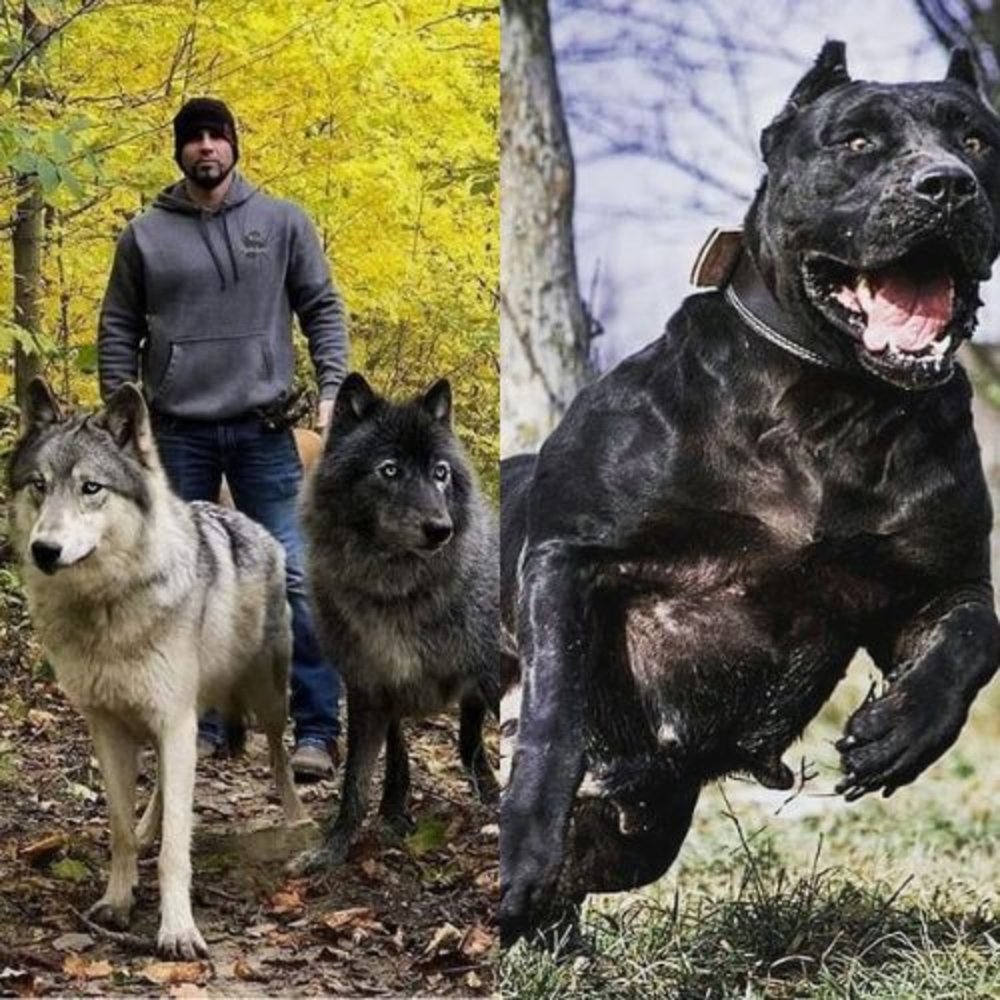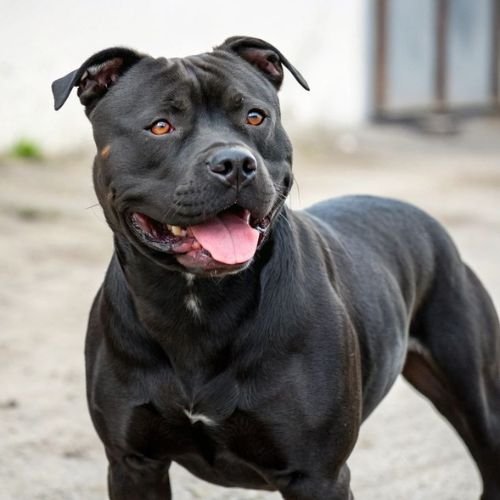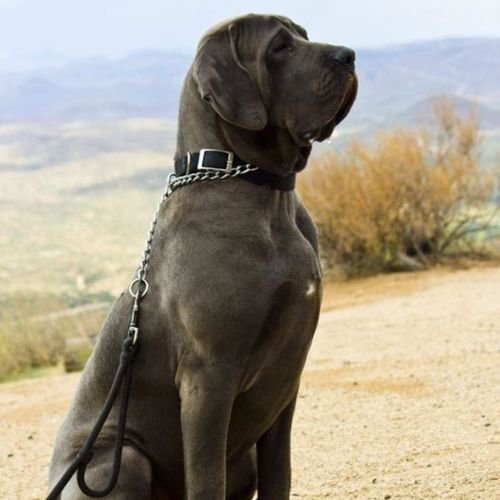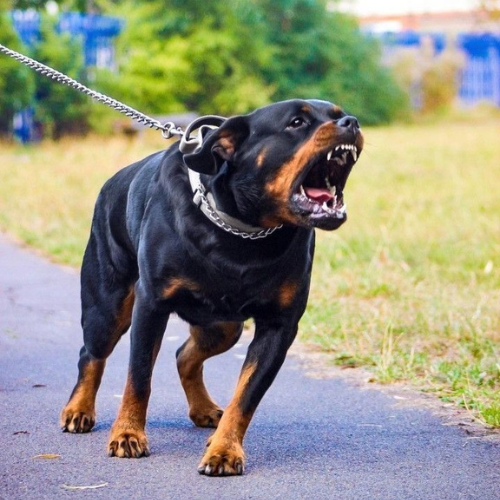10 Dog Breeds Banned in Over 30 Countries: Traits, Myths, and Realities

10 Dog Breeds Banned in Over 30 Countries: The debate over banned dog breeds is as heated as it is complex. While headlines often focus on breed-specific legislation (BSL), recent developments—like Germany’s 2024 ban on American Bullies and France’s stricter enforcement of existing laws—reveal a deeper clash between public safety concerns and ethical ownership. Drawing on recent data, advocacy campaigns, and insights from experts like Dr. Linda Harper of the International Coalition for Animal Welfare (ICAW), this blog dismantles myths, analyzes global trends, and answers the burning question: Do bans work, or do they punish the wrong stakeholders?
10 Dog Breeds Banned in Over 30 Countries:
1. Pit Bull Terrier: Media Frenzy vs. Scientific Reality.

Pit Bulls are walking contradictions—athletic powerhouses with hearts of gold. Their stocky frames and jaw strength evoke fear, yet properly socialized, they’re therapy dogs and nanny companions. But here’s the twist: Their eagerness to please makes them trainable, yet their history in blood sports shadows them. In Ireland, a Pit Bull named Daisy made headlines as a search-and-rescue hero.
Pit Bulls, banned in over 40 countries, are often portrayed as inherently aggressive. However, a 2023 study by the University of Veterinary Medicine Vienna found no genetic markers for aggression unique to the breed. Social media amplifies fear; viral videos of attacks rarely show context, like provocation or poor training.
Key Update: The #EndBSL campaign, backed by ICAW, has successfully overturned bans in Cyprus and parts of Canada. University of Vienna Study on Pit Bull Genetics
2. Tosa Inu: Cultural Heritage vs. Global Fear

10 Dog Breeds Banned in Over 30 Countries: Bred for sumo-style dog combat, the Tosa moves with deliberate, almost meditative calm. Unlike barkers, they strategize—like chess players in a canine body. Their reserved nature masks dominance; a single stare can freeze intruders. Japan’s cultural icon is banned in the UK, a testament to its misunderstood legacy.
Japan’s Tosa Inu, bred for ceremonial combat, faces bans in Norway and Malta. However, Japan’s strict ownership laws—mandating muzzles in public and rigorous licensing—prevent incidents. Contrast this with Denmark, where a lack of regulation led to a 2023 attack involving an untrained Tosa, fueling calls for nationwide bans.
Expert Insight: “Bans ignore cultural context,” says Dr. Harper. “Education, not eradication, solves problems.”
3. Dogo Argentino: The Hunting Paradox

10 Dog Breeds Banned in Over 30 Countries: Imagine a dog bred to chase pumas. The Dogo’s all-white coat isn’t for show—it’s camouflage. Fearless yet fiercely loyal, they bond deeply with families. But beware: Their prey drive is a live wire. A friend in Argentina once described his Dogo as “a cuddle monster who mistakes squirrels for enemies.
Banned in New Zealand and the UAE, Dogos are prized in Argentina for their loyalty. A 2024 report by the Canine Policy Alliance highlights that 80% of Dogo-related incidents in Europe involve unneutered males owned for “status.” Spain’s mandatory sterilization laws, however, have reduced Dogo attacks by 60% since 2020.
4. American Bully: The Newest Target

Added to banned lists in Germany and France in 2024, American Bullies face scrutiny for their muscular build. Yet, the UK’s Kennel Club argues the breed is not inherently dangerous—poor breeding practices and backyard breeders are the culprits.
5. Wolf Hybrids: Conservation vs. Companionship

10 Dog Breeds Banned in Over 30 Countries: Part husky, part timber wolf, hybrids are nature’s gamble. Their haunting howls and amber eyes enchant, but their instincts are a ticking clock. One owner shared, “It’s like owning a tornado—beautiful until it destroys your living room.” Bans exist because domestication battles wild DNA daily.
Banned in Iceland and Norway, wolf-dog hybrids face unique challenges. A 2023 IUCN report warns that interbreeding with wild wolves threatens genetic purity. Meanwhile, Finland’s strict licensing system—requiring DNA tests and secure enclosures—balances ownership with conservation.
Data Point: Only 12% of wolf hybrids in the U.S. live beyond age 5 due to abandonment or euthanasia.
6. Presa Canario: Training Over Trauma

10 Dog Breeds Banned in Over 30 Countries: Muscular and aloof, Presas radiates “approach at your peril” energy. A fatal attack in the U.S. in 2001 cemented their notoriety, but enthusiasts argue that irresponsible owners, not the breed, are to blame. Their intelligence demands purpose—think agility training, not idle lounging.
Australia’s ban on Presa Canarios followed a 2019 fatality linked to an untrained, isolated dog. Conversely, Spain’s National Association of Presa Canario Owners mandates socialization classes, resulting in a 90% drop in aggression reports.
7. Boerboel: South Africa’s Living Fortress-Power vs. Responsibility

10 Dog Breeds Banned in Over 30 Countries: Boerboels don’t just guard homes; they become the home. Weighing up to 200 pounds, their presence alone deters threats. Yet, with children, they morph into patient playmates. The catch? Without firm training, their protective drive spirals into aggression.
Although banned in Qatar and Denmark, boerboels are essential on South African farms, deterring lions and poachers. The disconnect? Urban owners often fail to provide adequate exercise and mental stimulation.
Case Study: A 2024 Dubai trial program allows Boerboel ownership with mandatory GPS tracking and behavioral assessments.
8. Fila Brasileiro: The Guardian Dilemma

10 Dog Breeds Banned in Over 30 Countries: The Fila’s “ojeriza” (distrust of strangers) isn’t a flaw—it’s bred-in DNA. These Brazilian guardians track with bloodhound precision but defend like soldiers. One wrong move near their family, and their bark shifts from deep rumble to thunderclap. Early socialization? Non-negotiable.
Outlawed in the UK, Filas are revered in Brazil for their protective instincts. However, their “once a stranger, always a stranger” mentality requires early socialization. Brazil’s proposed Fila Ownership Certification (2025) aims to curb misuse while preserving the breed.
9. Central Asian Shepherd: Independence Clashes with Urban Life

10 Dog Breeds Banned in Over 30 Countries: An ancient livestock guardian from Central Asia, this robust breed boasts a muscular build, dense coat, and imposing stature. Known for loyalty and independence, they excel as protectors, instinctively wary of strangers yet devoted to family. Their calm, confident demeanor stems from centuries of autonomous decision-making while guarding flocks.
Banned in Belarus for territorial aggression, these shepherds thrive in rural Kazakhstan, guarding livestock. Cities like Minsk lack the space to accommodate their natural behaviors, leading to conflicts.
Solution Spotlight: Kazakhstan’s “Shepherd-to-City” program rehomes urban Central Asians to rural areas, reducing abandonment rates.
10. Rottweiler: From Roman Ally to Modern Scapegoat

10 Dog Breeds Banned in Over 30 Countries: Originating in Germany, the Rottweiler is a powerful, muscular breed renowned for its loyalty and protective instincts. Recognizable by its black-and-tan markings and confident stance, it excels as a guard dog and family companion. Temperamentally calm yet assertive, Rottweilers bond deeply with owners, displaying unwavering devotion. Early socialization and consistent, positive training are crucial to curb territorial tendencies and ensure obedience. Their intelligence and work ethic thrive with structured tasks, but dominance requires firm leadership. Prone to hip dysplasia and obesity, regular exercise and vet checks are vital and ideal for experienced handlers, they suit active homes valuing vigilance and companionship.
Banned in Portugal, Rottweilers remain indispensable in roles like search-and-rescue. The U.S. Army’s K-9 unit reports zero severe incidents involving Rottweilers in the past decade—proof that training trumps genetics.
The Global Shift: Alternatives to BSL
Behavior-Based Laws: Calgary’s model, which fines owners for irresponsible behavior rather than banning breeds, reduced dog bites by 70%.
Mandatory Training: France now requires obedience courses for owners of “high-risk” breeds.
Breeder Licensing: Germany’s 2024 laws penalize unlicensed breeders of American Bullies and Wolf Hybrids.
10 Dog Breeds Banned in Over 30 Countries: Conclusion
Breed-specific legislation is a flawed solution to a human problem. As Dr. Harper notes, “A dog’s behavior reflects its owner’s choices—not its DNA.” By prioritizing education, responsible ownership, and nuanced policy, we can protect communities without condemning breeds to extinction.









